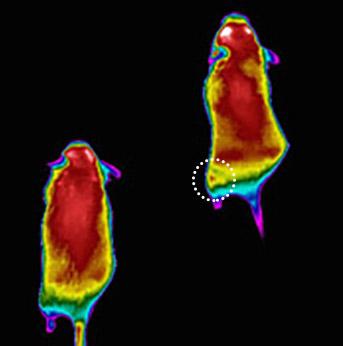Due to the boom-and-bust nature of existence prior to the last 50 years, we have evolved protection against starvation - our bodies adjust on the fly. That is why if you just go on a crash diet, you will lose some weight right away and then plateau and if you eat normally again, the weight comes back. Your body 'settles in for a long winter' and metabolic efficiency goes up.
So if you really want to burn more calories - and that is the only way you are going to lose weight, no matter what miracle diet plan is on television - you have to make sure your body does not go into 'energy savings' mode.

Credit: Leonid Zingman, University of Iowa
Writing in Molecular Therapy, scholars developed a targeted approach to override evolution's protection against starvation and allow muscle to burn more energy, even during low to moderate exercise. The work builds on previous research, which found that a protein called ATP-sensitive potassium (KATP) channel is a powerful modulator of energy efficiency in skeletal muscle even during low-intensity activity. They showed that altering the activity of the KATP protein causes skeletal muscles to become less efficient and burn more calories.
To turn this finding into a therapy, however, the team needed an approach that disrupted the channel's activity in a very isolated and controlled way. The gene therapy method used in the earlier mouse studies is not feasible for human patients, and a drug that inhibits the channel protein would target not only the channels in muscle but also those in the heart, which could produce very dangerous side effects.
In the new study, the researchers made a compound called a vivo-morpholino, which suppresses production of KATP. Injecting this compound into the thigh muscles of mice produced a local loss of the protein but did not affect the protein in other organs or even in neighboring skeletal muscles. The study showed that the injected muscles burned more calories than untreated muscle without significantly affecting the muscle's ability to tolerate exercise.
"Our bodies are geared to be energetically efficient and this often works against us when we are trying to control or reduce our weight," says study co-author Denice Hodgson-Zingman, MD, UI associate professor of internal medicine. "This study shows for the first time that this energy efficiency can be manipulated in a clinically translatable way. While such an approach would not replace the need for a healthy diet or exercise, it could jump start the process of weight loss by overcoming the initial hurdles imposed by our energy-efficient physiology."
"By making skeletal muscles less energy efficient, they burn more calories, even while doing [normal] daily activities," says study co-author Leonid Zingman, MD, University of Iowa associate professor of internal medicine and a staff physician at the Iowa City VA Medical Center. "With this intervention, the benefits of exercise in burning calories could be accessible to a broader range of people by making the calorie burning effects of skeletal muscle greater even at low levels of activity that most people would be able to undertake."
Zingman and Hodgson-Zingman both are members of the Francois M Abboud Cardiovascular Research Center and the Fraternal Order of Eagles Diabetes Research Center at the University of Iowa. The research team also included Siva Rama Krishna Koganti, Zhiyong Zhu, Ekaterina Subbotina, Zhan Gao, Ana Sierra, Manuel Proenza, and Liping Yang of the University of Iowa, and Mayo Clinic researcher Alexey Alekseev. The research was funded in part by grants from the National Institutes of Health and the Department of Veterans Affairs.




Comments